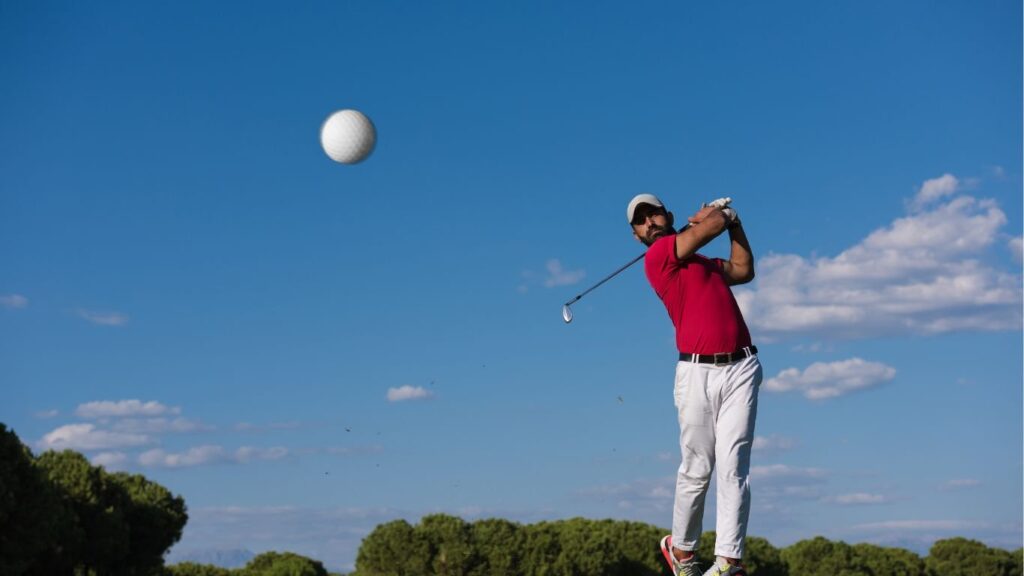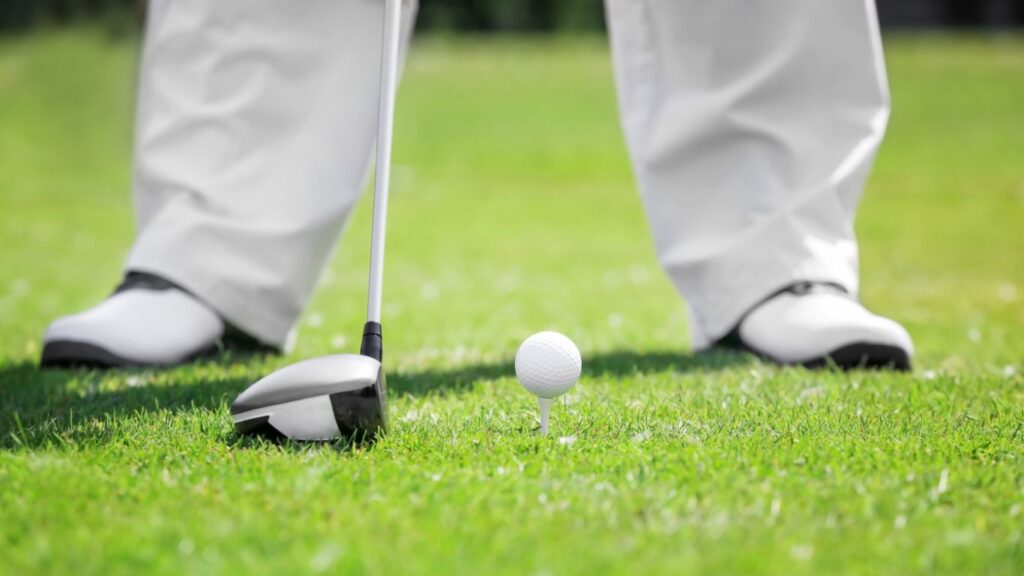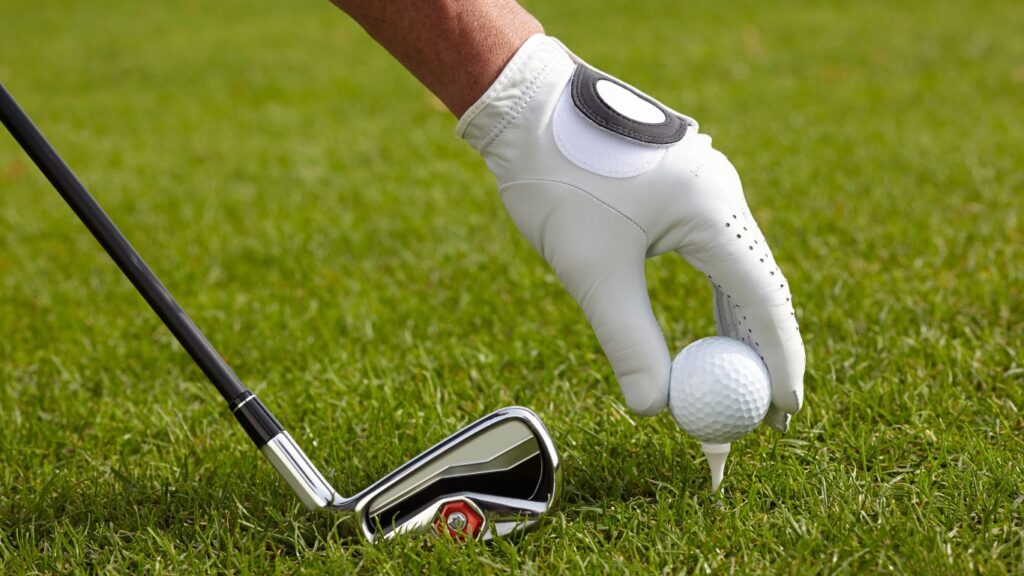As a golfer, hitting the perfect shot is a dream come true, and one of the most desirable shots in the game most golfers want is the draw.
A draw shot begins to the right of the target and then curves back to the left, landing on the target or even rolling past it. It’s a shot that can add distance and accuracy to your game and make you feel like a professional.
But how do you hit a draw shot? The answer to this question is not always straightforward. In this blog post, we will discuss the key elements of hitting a consistent draw-shot and provide you with some tips and drills to help you enhance your game.
Understanding a Draw Shot Before discussing how to hit a draw shot, it is crucial to understand what it is. A draw shot is a type of shot in golf that curves from right to left (for a right-handed golfer) in flight.
It’s the opposite of a fade shot, which curves from left to right. A draw shot is achieved by imparting a clockwise spin on the ball, causing it to curve to the left in flight. The amount of curve depends on the spin and the clubface angle at impact.

Why Hit a Draw Shot? There are several reasons why you might want to hit a draw shot:
Added Distance: A well-executed draw shot can add distance to your shots as the ball will typically roll further after landing.
Accuracy: A draw shot can also help you hit your target more accurately, as the ball will curve towards it.
Playability: A draw shot can be especially useful in certain situations, such as when you need to get around an obstacle or avoid a hazard.
Hitting a Draw Shot There are several key elements to hitting a draw shot, including your setup, swing path, clubface angle, and follow-through. Here’s a step-by-step on how to hit a draw shot:
Proper Setup
As with any golf shot, a proper setup is key to hitting a draw shot. Align your feet, hips, and shoulders to the right of your target (for a right-handed golfer).
Position the the golf ball only slightly further back in your stance than you would for a straight shot. Grip the club firmly, but not too tightly. Maintain a relaxed and balanced posture throughout your swing.

Swing along an Inside Out Swing Path
The path of your golf swing is critical to hitting a draw shot. Swing along an inside-out path, meaning that your clubhead should travel from inside the target line on your backswing to outside the target line on your downswing.
To achieve this inside out swing path, focus on bringing your clubhead back along an inside path on your backswing, keeping your clubface square to the target.
On your downswing, swing the clubhead out and to the right of the target line, which will create the necessary spin for a draw shot.
Closed Clubface Angle
The clubface angle at impact is also critical to hitting a draw shot. To achieve the proper spin and curve, you need to have a closed clubface at impact. This means that the clubface should be pointing slightly to the left of the target (for a right-handed golfer).
To achieve a closed clubface, rotate your hands slightly to the right on your backswing, and then keep them in that position on your downswing. This will help you close the clubface and create the necessary spin for a draw shot.
Follow-Through towards Your Target
The follow-through is an important part of hitting a draw shot. After making contact with the ball, follow through towards your target, which will help you maintain the ball flight, correct swing path and create the necessary spin.
Focus on maintaining a smooth, fluid motion on your follow-through, and avoid stopping your golf swing abruptly.
Drills to Help
In addition to the key elements of hitting a draw shot, there are drills you can set up and practice to improve your game. These drills will help you get a feel for the correct swing path, improve your clubhead speed, and maintain a closed clubface angle.
Alignment Stick Drill
This drill helps you swing along an inside-out path. Place an alignment stick on the ground, parallel to your target line, and practice swinging along the inside-out path, with your clubhead traveling over the stick on your downswing.
This will help you get a feel for the correct swing path and improve your clubhead speed.
Headcover Drill
This drill helps you practice a closed clubface angle. Place a headcover next to your ball, on the side where you want the ball to start its flight (to the right for a draw shot). Then, focus on hitting the ball and knocking the headcover over with your follow-through.
This will help you maintain a closed clubface angle and create the necessary spin for a draw shot.
Golf Ball Position Drill
The position of the ball in your stance can affect your club path and ability to hit a draw shot. Try experimenting with ball position, moving it slightly further back in your stance for a more pronounced draw. This can help you find the right balance between swing path and clubface angle to create the perfect draw shot.

Follow-Through Golf Swing Drill
Focus on your follow-through to help you maintain the correct swing path and create the necessary spin. Practice hitting shots with a full, smooth follow-through towards your target, and avoid stopping your swing abruptly.
Focus on the Key Elements
Hitting a draw shot is a desirable shot for many golfers. To hit a draw shot, focus on the key elements of your setup, swing path, clubface angle, and follow-through. Incorporate the drills mentioned above into your practice routine to improve your draw ball flight game.
Remember to start with a proper setup, maintain balance throughout your swing, and use the right grip and club selection for your shot. Practice consistently, and be patient with yourself as it takes time to master the art of hitting a draw shot.
If you’re still struggling to hit a draw shot, consider taking a professional golf swing lesson to get personalized feedback and guidance.
Incorporating a draw shot into your game can add distance and accuracy to your shots, giving you a competitive edge on the golf course. With consistent practice and patience, you can become a master of hitting a draw shot and enjoy a more successful and enjoyable golf game.
FAQs
Why is a draw so hard to hit?
Hitting a draw shot in golf can be challenging because it requires a combination of proper technique, swing path, and clubface angle at impact. A draw shot is achieved by imparting clockwise spin on the ball, causing it to curve to the left (for a right-handed golfer) in flight.
To achieve this spin, the clubface must be closed at impact while the swing path follows an inside-out path. It takes a lot of practice and consistency to master this shot, and even the best golfers struggle with it from time to time.
What is the proper stance for hitting a draw?
The proper stance for hitting a draw shot in golf involves aligning your feet, hips, and shoulders to the right of your target (for a right-handed golfer).
This stance promotes an inside-out swing path, which is essential for hitting a draw shot. Additionally, the ball should be positioned slightly further back in your stance than it would be for a straight shot, helping to create the necessary spin.
Proper balance and posture are also crucial in maintaining the correct swing path and clubface angle at impact.
What is the easiest way to hit a draw in golf?
The easiest way to hit a draw shot in golf is to focus on maintaining a closed clubface at impact. This can be achieved by rotating your hands slightly to the right on your backswing and keeping them in that position on your downswing.
Additionally, the path of your swing should be inside-out, which means your clubhead should travel from inside the target line on your backswing to outside the target line on your downswing.
By focusing on these two key elements, you can create the necessary spin and curve for a draw shot.

What’s the best way to hit a draw?
The best way to hit a draw shot in golf is to focus on the key elements of a proper setup, swing path, clubface angle, and follow-through.
This includes aligning your feet, hips, and shoulders to the right of your target, swinging along an inside-out path, maintaining a closed clubface angle at impact, and following through towards your target.
Incorporating drills and consistent practice can help improve your ability to hit a draw shot, leading to increased distance and accuracy on the golf course.
Why is it so hard to hit a draw in golf?
Hitting a draw shot in golf can be challenging because it requires precise technique and coordination. The golfer must maintain the proper swing path and clubface angle at impact, which can be difficult to do consistently.
Additionally, factors such as wind conditions, course layout, and personal tendencies can affect the ability to hit a draw shot. Consistent practice and patience are key to mastering this shot.
How do you consistently hit a draw with a driver?
To consistently hit a draw shot with a driver in golf, you need to focus on maintaining a closed clubface at impact and swinging along an inside-out path. This can be achieved by rotating your hands slightly to the right on your backswing and keeping them in that position on your downswing.
Additionally, focusing on a smooth, fluid follow-through towards your target can help maintain the correct swing path and create the necessary spin for a draw shot.
What foot position for hitting a draw?
The foot position for hitting a draw shot in golf involves aligning your feet, hips, and shoulders to the right of your target (for a right-handed golfer). This promotes an inside-out swing path, which is essential for hitting a draw shot.
The ball should also be positioned slightly further back in your stance than it would be for a straight shot, helping to create the necessary spin. Proper balance and posture are also crucial in maintaining the correct swing path and clubface angle at impact.

Is it harder to hit a draw or a fade?
Whether hitting a draw or a fade shot is harder in golf depends on a player’s individual swing tendencies and preferences.
For example, players who have a natural tendency to slice the ball may find it easier to hit a fade shot, while those who tend to hook the ball may find a draw shot easier.
Additionally, course layout and wind conditions can also affect the difficulty of hitting a draw or fade shot.
In general, a draw shot may be slightly harder to hit than a fade shot because it requires more precise technique and timing. To hit a draw shot, a golfer must maintain a closed clubface at impact while swinging along an inside-out path.
This requires a high level of coordination and consistency. In contrast, hitting a fade shot typically involves an open clubface at impact and an outside-in swing path, which can be easier to execute for some golfers.
Ultimately, the key to hitting either shot consistently is to focus on proper technique, swing path, and clubface angle at impact.
With consistent practice and patience, golfers can develop the ability to hit both draw and fade shots with confidence and accuracy on the course.
How does Rory McIlroy hit the ball so far?
Rory McIlroy is known for his exceptional distance and accuracy off the tee in golf. There are several factors that contribute to his impressive power and consistency.
One key factor is his technique, which emphasizes a smooth, fluid swing with a full shoulder turn and proper weight transfer. McIlroy also has a high clubhead speed, which allows him to generate more power and distance on his shots. Additionally, he uses custom-fit clubs and balls that are optimized for his swing, which can improve his ball flight and overall performance.
Finally, McIlroy has a strong mental game, with a focus on staying calm and confident on the course.
Do pros hit fades or draws?
Professional golfers can hit both fade and draw shots, depending on their individual swing tendencies and the needs of the shot. In general, many professional golfers tend to favor one shot shape over the other, based on their personal preferences and strengths.
For example, some golfers may prefer a fade shot for greater accuracy, while others may prefer a draw shot for added distance.
Ultimately, the key to success in golf is not necessarily the type of shot shape used, but rather the ability to execute shots with consistency and accuracy.
Professional golfers are able to hit a wide range of shots and shapes, relying on their skill and experience to adapt to different course conditions and challenges.







